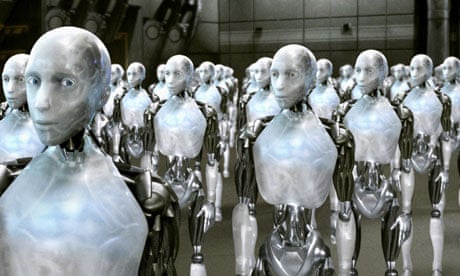Corridors are deserted. Office doors are locked. Laboratories are quieter than usual. It can mean only one thing: conference season is upon us and it's time for scientists to shut up shop and take to the road, if only for a few days.
For more than a thousand physicists, the destination last week was the Palais de Congrès in Paris, an enormous 1970s construction of jutting concrete and angled glass. Until Wednesday, the centre will host one of the most eagerly awaited meetings on the scientific calendar. The International Conference on High Energy Physics (ICHEP) has an impressive track record as the place where new discoveries are announced, but this time around there is an extra buzz in the air.
This is the first year that physicists at the Large Hadron Collider (LHC) at Cern, the European particle physics lab near Geneva, will join researchers from other laboratories in unveiling their latest results. Talks at the meeting will cover a vast range of topics, from the performance of the LHC and other accelerators to quirks of the laws of nature and the hunt for the Higgs boson, the elusive particle said to give mass to the building blocks of nature.
One topic that will definitely not be discussed, at least not seriously, is whether the LHC might just destroy the planet. Thanks to a few vocal doomsayers and a run of unsuccessful legal cases, the exotic idea has become lodged in the public consciousness. It has probably done more to raise Cern's profile than anything in the laboratory's recent history.
Wild claims about the risks of the LHC received blanket coverage from the world's media in the run-up to the machine being switched on last year. The nature of the catastrophe took on several guises. We heard that a black hole might appear beneath the Swiss countryside and steadily devour the Earth. Maybe planet-crunching entities called "strangelets" could pop into existence and reduce our hospitable rock to a sizzling ball no wider than Lord's cricket ground. Or the universe might "collapse" into a more stable state, wiping out life here and anywhere else it might lurk in the process (see below). Each of these scenarios, and more besides, were argued by a small number of concerned individuals to be clear and present dangers to humanity.
The Large Hadron Collider is not the first particle accelerator to be framed as a doomsday machine. Particle physicists have been accused of gambling with the future of humanity since at least the 1950s, when forerunners of the LHC were being built. Mention world-ending scenarios to staff on the LHC, or its main competitor, the Tevatron at Fermilab near Chicago, and you can expect a roll of the eyes at best. Physicists have gone to great pains to explain why such fears are unfounded. The time could have been better spent by getting on with research.
Scientists have good reason to be weary of fanciful speculation over the safety of their experiments, but some academics claim there are valuable lessons to be learned from the LHC experience, ones that could save us from more realistic catastrophes before the century is out. Nick Bostrom, director of the Future of Humanity Institute at Oxford University, says that advances in fields such as weapons technology, artificial intelligence and synthetic biology (which has already given researchers the tools to create viruses from scratch) could lead to what he calls "existential threats". These are catastrophes that play out on an unprecedented scale, ones that have the potential to bring an end to the human story, either by wiping us out completely, or by "permanently and drastically destroying our future potential".
The creation of a lethal synthetic virus that kills on a global scale is but one potential risk that Bostrom highlights. Breakthroughs in physics could lead to new weapons that increase the dangers of war, he says, while advances in computing could see the advent of machines that can improve their own intelligence, and surpass that of humans. Even attempts to manipulate the atmosphere to combat global warming might backfire and trigger a global disaster.
Bostrom says the LHC should be seen as a test case, used by society to learn how to deal with events and technologies that may genuinely threaten our existence in the future. "So far, we haven't done very well, but events surrounding the LHC could stimulate us into getting our act together for next time, when the threats need to be taken more seriously," he says. "I think the danger from particle accelerators is extremely small, but there will be other areas that will cause major existential risks and we need to learn how to deal with these situations in a rational way."
Existential threats are nothing new. Schoolchildren learn that an asteroid strike wiped out three quarters of Earth's species 65m years ago and promptly ended the reign of the dinosaurs. There have been at least four other mass extinctions, each one the result of an epic natural disaster. The point that intrigues researchers such as Bostrom is that society is bad at identifying dangers such as these, and even worse at preparing for them. In an essay published in the Journal of Evolution and Technology in 2002, Bostrom expressed dismay at how little research has been done on serious threats to humanity, writing: "There is more scholarly work on the life-habits of the dung fly than on existential risks." Little has changed since, he says.
A major sticking point, says Bostrom, is that humans are doomed only to learn from direct experience. Nuclear reactors were made safer after the Chernobyl disaster in 1986. The UN drew up plans for a tsunami warning system in the Indian Ocean a year after 230,000 people died from a devastating wave in 2004. Plans to bolster flood defences around New Orleans are still being thrashed out, five years after hurricane Katrina killed nearly 2,000 and left thousands more homeless. In each case, the risks were known, but they were only acted on after the event.
"Our attitude throughout human history has been to experience events like these and then put safeguards in place," says Bostrom. "That strategy is completely futile with existential risks. By definition, you don't get to learn from experience. You only have one chance to get it right."
One approach that has been used to clarify the nature and extent of a potentially dangerous situation involves setting up a panel of experts who understand the relevant science well enough to make an informed risk assessment. In 1999, the US physicist John Marburger III was director of Brookhaven National Laboratory on Long Island, New York. The lab is home to a particle accelerator called the Relativistic Heavy Ion Collider. That summer, a puff piece on the machine in Scientific American magazine led to two letters that raised concerns over whether the machine might create a black hole or cause other untoward damage to the planet. Marburger immediately convened a panel of leading physicists to work through every doomsday scenario they could think of and assess the risk of them happening. The panel concluded the machine was safe after drawing on the fact that more violent particle collisions caused by cosmic rays slamming into planets, stars and clouds of dust and gas have occurred in nature for billions of years. At Cern, a similar safety review of the LHC, the construction of which had only just begun, reached the same conclusion.
The safety reviews at Brookhaven and Cern were largely public relations exercises. Governments never considered pulling the plug on either machine, and courts dismissed legal challenges that sought injunctions on the colliders. But the reviews highlighted what some perceived to be a shortcoming of scientific panels. They could be seen as highly partial: particle physicists ruling on the safety of particle accelerators might well have a vested interest in the projects going ahead.
Soon after the fuss broke, Francesco Calogero, an Italian physicist and former secretary general of Pugwash, an organisation that pursues ways to reduce threats to global security, championed an alternative way of deciding how risky an experiment might be. In a paper entitled, "Might a laboratory experiment destroy planet Earth?", he backed for a more adversarial approach to risk analysis. Instead of one panel of experts, there should be two. The first, the blue team, makes the case for the experiment's safety, while the red team does its best to emphasise the dangers. The two then come together and decide whose arguments are the most robust.
"It is not perfect, but I think it is the best strategy," says Calogero. "It overcomes any perceived vested interest and gives people the chance to point out arguments that are not watertight and what might go wrong."
Others argue that decisions over the fate of humanity are too important to be left to panels of scientists. Richard Posner, a US appeals court judge and author of the 2004 book Catastrophe: Risk and Response, wants an Office of Risk and Catastrophe set up in the White House. The office would be charged with identifying potentially dangerous technologies and calling in experts to inform its own risk assessments. "The problem right now is that no single government department takes responsibility for these kinds of situations," he says.
An international network of such offices could go a long way to improving global security, Posner says, but the idea is controversial. "Done well, it could be extremely valuable, but there are many ways it might end up being politicised or compromised," says Bostrom.
According to Robert Crease, head of philosophy at the State University of New York and author of the 2006 book The Philosophy of Expertise, our best hope for surviving existential threats is to train scientists as best we can and trust them to police themselves.
"You don't want a committee of people who don't have expertise trying to review the expertise of people who do. That doesn't improve matters. As soon as you set up a committee, quarrels develop over who's a member, who's best and who has what hidden agenda. It's a disaster," he says.
"The optimal course of action, the best we can do, is to improve, in each discipline, the review panels and the institutions that guarantee expertise. It boils down to trust. We don't like to rely on it, but we do every day," he adds.
For physicists meeting in Paris this week, the focus will be on discoveries rather than doomsday scenarios, and for good reason. The fears raised over particle colliders such as the LHC belong firmly in the realm of science fiction. But there are important lessons to be learned from the LHC story that go beyond particle physics. We might be faced with truly catastrophic threats before the century is out, and to deal with them we need to change our way of thinking. Instead of waiting for disaster to strike before making life safer, we have to be one step ahead. Contrary to the doomsayers' fears, the LHC might help ensure the end is never nigh.
Ending it all: the threat to the entire universe
It has been called "the ultimate ecological catastrophe", but even these strong words fail to convey the true horror and finality of a grim kind of natural disaster known to physicists as "vacuum decay".
Forget pandemic viruses that wipe out humanity, asteroid strikes that devastate life on Earth and even black holes that devour the planet. Vacuum decay leaves the entire universe not only lifeless, but without any hope of life for ever more.
Vacuum decay, which is happily only a theoretical prospect, occurs when part of the universe is knocked into a more stable state than it exists in today. This creates a bubble of "true vacuum" that expands at the speed of light. As the bubble grows, it reduces the energy locked up in the vacuum of space and rewrites the laws of nature.
In 1980, the late Harvard physicist Sidney Coleman published calculations that showed for the first time that vacuum decay was eternally terminal. He wrote: "One could always draw stoic comfort from the possibility that perhaps in the course of time the new vacuum would sustain, if not life as we know it, at least some structures capable of knowing joy. This possibility has now been eliminated."
Ian Sample's Massive: The Hunt for the God Particle is published by Virgin Books









Comments (…)
Sign in or create your Guardian account to join the discussion